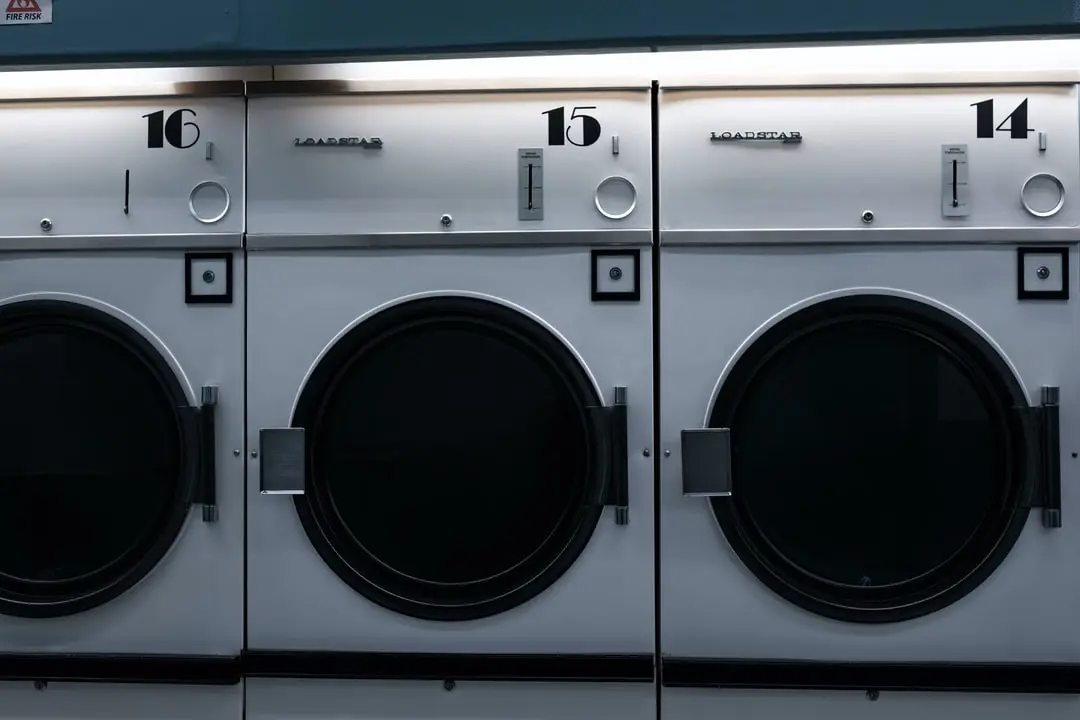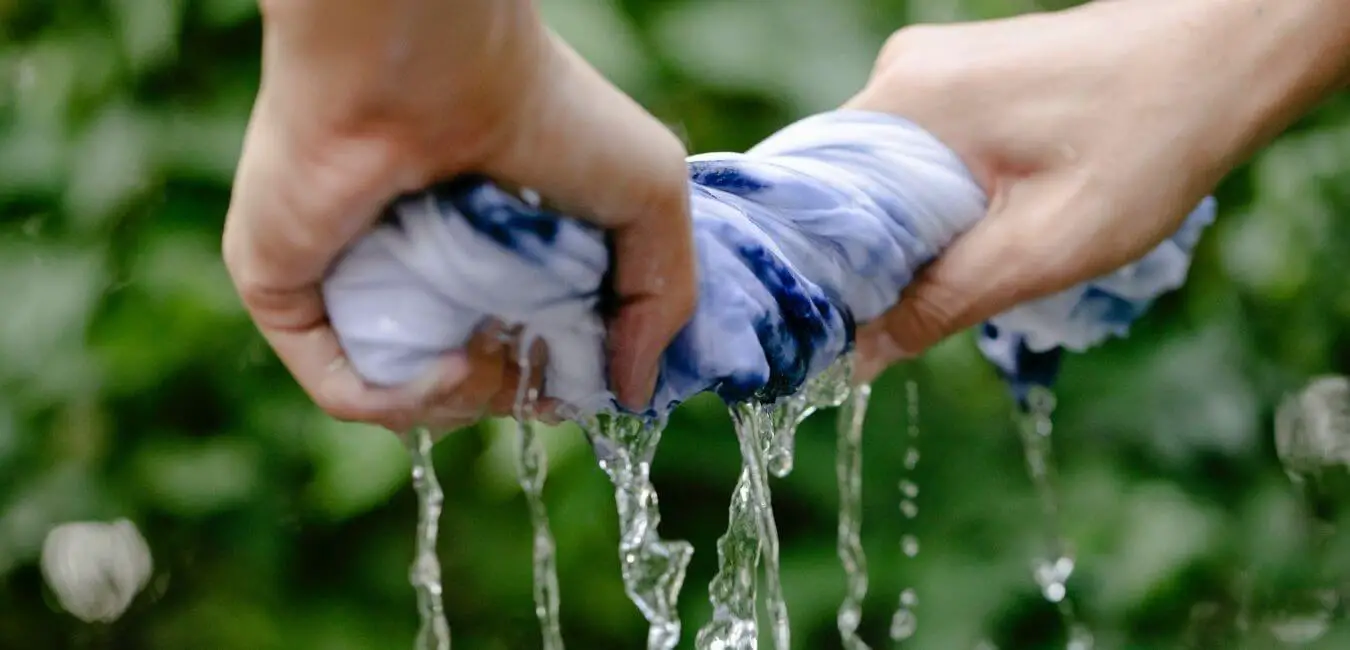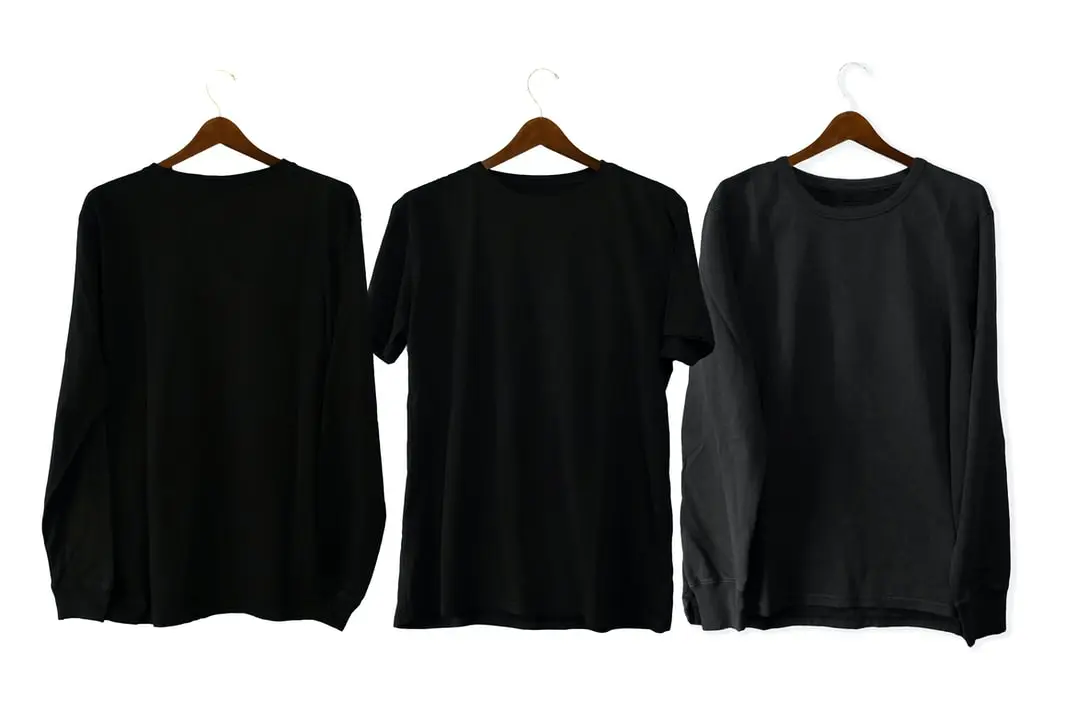The small symbols on your clothing tags play a crucial role in maintaining your wardrobe. Each icon provides important care instructions that help prevent damage and prolong the life of your garments. Many individuals tend to overlook these vital details, which can lead to unfortunate laundry errors. Understanding what these symbols represent can significantly enhance your laundry routine, making it more efficient and effective.
For instance, a symbol resembling a bucket of water indicates washing instructions, while a triangle may signify the use of bleach. A circle with a dot inside often refers to tumble drying settings, guiding you on the appropriate heat level to use. Familiarizing yourself with these icons can save you from shrinking your favorite sweater or fading a vibrant blouse.
It’s essential to pay attention to these symbols, as they reflect the manufacturer’s recommendations for maintaining the garment’s quality. Ignoring them can result in irreversible damage, such as color loss or fabric degradation. Investing a little time in understanding these symbols will not only protect your clothing but also save you money in the long run.
To make the most of your laundry care, consider using a laundry guide that explains each symbol in detail. Additionally, you can find various laundry products specifically designed to meet the needs of different fabrics, such as gentle detergents for delicate materials or color-safe bleach for bright colors.
This informed approach will lead to cleaner, longer-lasting clothes and a more satisfying laundry experience.
Understanding Laundry Symbols
Immersing yourself in the realm of laundry reveals the importance of understanding symbols, which can save time and prevent harm to your garments. The history of these symbols mirrors the evolution of fabric care and washing technologies. Each icon provides critical information on how to care for various materials, ensuring your clothes remain in excellent condition and last longer.
Understanding these symbols allows you to take better care of your wardrobe, safeguarding the investment you’ve made in your clothing. Whether it’s a basic wash icon or a detailed drying instruction, knowing what these symbols signify enables you to share your insights with others effectively.
For example, certain symbols specify the appropriate water temperature for washing, while others indicate if ironing is necessary. As you learn to decode these icons, you empower yourself to make informed choices, minimizing the chances of shrinking or damaging your fabrics.
Grasping laundry symbols not only enhances your connection with your clothing but also shows consideration for the people you care about. Taking the time to become familiar with these essential icons will benefit both your garments and your relationships.
Common Washing Symbols
Understanding laundry care starts with familiarizing yourself with the common washing symbols found on garment labels. These symbols play a crucial role in helping you care for fabrics properly, ensuring they remain in good condition and retain their appearance over time.
You will notice several key symbols: the wash tub indicates that machine washing is acceptable, while the dots inside the tub suggest the ideal water temperature for washing. A hand in a tub signifies that handwashing is required, which is particularly important for delicate items. If you come across a crossed-out tub, it clearly indicates that washing isn’t permitted for that garment.
Being aware of the history behind these symbols can enhance your understanding of their significance. Many of these symbols were developed to standardize laundry practices across different cultures, which helps promote better fabric care. For example, a circle within a square means the item should only be dry cleaned, highlighting the importance of seeking professional help for certain sensitive fabrics.
Recognizing these symbols is essential not only for maintaining the quality of your clothes but also for extending their lifespan. When you follow these guidelines, you can avoid damage and preserve the appearance of your favorite garments.
Drying Symbols Explained
Now that you’ve got a handle on washing symbols, it’s time to turn your attention to drying symbols. These icons provide essential guidance on whether to machine dry or air dry your garments, helping to ensure they maintain their look and feel.
Understanding these symbols is vital for preserving the quality of your fabrics, as improper drying methods can lead to shrinkage, fading, or damage.
For instance, a circle with a dot inside indicates that the item can be tumble dried at a low temperature, while a square with a circle inside suggests that it can be tumble dried but at a medium heat setting.
On the other hand, a line under the square means you should only dry the item on a delicate setting. Familiarizing yourself with these symbols will assist you in making informed decisions about your laundry, ultimately extending the lifespan of your clothing.
Incorporating this knowledge into your laundry routine won’t only help you avoid common drying mistakes but also keep your wardrobe looking fresh and vibrant.
Common Drying Symbols
Understanding common drying symbols can save you time and protect your clothes from damage.
These symbols offer guidance on selecting the appropriate drying methods for various fabric types, ensuring optimal moisture levels and minimizing the risk of shrinkage. Familiarity with these symbols enhances garment care and boosts energy efficiency in your laundry routine.
Here are some key drying symbols to keep in mind:
- Circle with a dot: This symbol indicates that you can safely use drying equipment, allowing for tumble drying without concern.
- Square with a circle inside: This means you can dry your garment in a dryer, but it’s wise to monitor the drying times to prevent over-drying.
- Square with a line: This instructs you to air dry your item, taking into account the climate conditions for best results.
Being aware of these symbols not only helps in maintaining your clothes but also contributes to a more efficient laundry process.
Machine Drying Guidelines
Understanding drying symbols is essential for effectively machine drying your clothes. Each symbol provides critical information about temperature settings and fabric compatibility, helping to preserve the appearance and texture of your garments. For instance, a circle with one dot signifies low heat, which is perfect for delicate fabrics, while a circle with two dots indicates medium heat, suitable for more robust items.
It is also important to pay attention to drying times because certain fabrics retain more moisture and may require longer drying cycles. This knowledge can enhance energy efficiency and reduce your utility bills.
When drying various types of garments, consider the moisture levels—items like towels tend to absorb a lot of water and should ideally be dried separately to avoid overloading the dryer.
To minimize static and prevent wrinkles, consider using dryer balls or fabric softener sheets. Organizing your laundry baskets by fabric type can simplify the sorting process before drying.
Following these guidelines not only safeguards your clothing but also ensures your family looks polished and presentable. Taking the time to comprehend these symbols will serve you well in maintaining your wardrobe’s quality.
Air Drying Techniques
Air drying is a gentle method that protects your garments while also conserving energy. Techniques such as hanging clothes or flat drying help maintain the integrity of fabrics, ensuring they last longer. Here are some effective strategies to consider:
- Utilize drying racks: These flexible tools are ideal for indoor drying and retain moisture well, particularly during colder months. They can be easily set up in various spaces of your home, providing an efficient way to air dry clothes without taking up much room.
- Take advantage of sunlight: Whenever possible, hang clothes outside. The sun not only promotes faster drying but also has natural disinfecting properties that can help eliminate bacteria and odors from your fabrics.
- Plan for seasonal drying: In the warmer months, use your outdoor space to dry clothes. In winter, create designated indoor drying areas to maintain a consistent laundry routine. This adaptability ensures that your clothes can dry effectively regardless of the weather.
Choosing air drying goes beyond just caring for your clothing; it also offers significant environmental benefits. Reduced energy consumption contributes to a greener planet, while careful fabric care prolongs the life of your garments.
Keep in mind that drying times may vary based on humidity and airflow, so adjust your routine accordingly. Embracing these air drying techniques not only supports your wardrobe but also promotes sustainable practices.
Ironing Symbols Decoded
While it may seem that ironing is simply about applying heat, understanding the symbols on clothing labels can help prevent potential fabric mishaps. Each symbol provides essential information about the appropriate ironing techniques for various fabric types. For example, a single dot indicates low heat settings ideal for delicate materials, whereas three dots signify that high heat is suitable for fabrics like cotton or linen.
Knowing how to use steam effectively is crucial. Certain fabrics respond well to steam, which aids in removing creases, while others may require dry ironing to preserve their texture.
Following the recommended ironing order is important, especially for garments with multiple layers, to prevent unnecessary wrinkles.
Safety precautions are also vital. Always check for specific instructions on the label prior to using your ironing tools. If you’re unsure about the best approach, consider seeking professional pressing services for delicate items.
Paying close attention to these symbols not only helps maintain your clothes but also shows consideration for those who value well-kept garments. With the right knowledge, you can ensure that every piece remains in excellent condition, ready to make a great impression.
Bleaching Symbols Overview
Understanding the symbols associated with bleaching is crucial for maintaining the quality of your clothing. When caring for fabrics, knowing how to properly use bleaching agents can significantly impact their longevity. These symbols provide guidance on whether bleach is appropriate, and if so, which type to use—whether it’s color-safe or traditional bleach.
Here are important considerations regarding bleaching symbols:
- Stain Removal: Symbols indicate when it’s appropriate to apply bleach for stubborn stains, ensuring the safety of the fabric.
- Bleach Alternatives: Many products now feature eco-friendly options; look for symbols that recommend these alternatives to reduce environmental harm.
- Color Bleaching: It’s essential to heed symbols that caution against color bleaching, as this can damage vibrant fabrics.
For example, if you see a triangle with a “do not bleach” symbol, avoid using any bleach on that garment. Conversely, a triangle with two lines indicates that color-safe bleach is acceptable.
Familiarizing yourself with these symbols can enhance your laundry experience, helping you to protect your clothes while tackling tough stains.
Special Care Symbols
In caring for your clothes, understanding special care symbols is crucial for following the correct laundering instructions. These symbols indicate the necessary care level for various fabrics, helping you avoid damage from improper treatment. Recognizing the differences among these symbols is essential since they represent textile classifications and specific sensitivities of fabrics.
| Symbol | Description |
|---|---|
| Iron with dots | Indicates the appropriate heat level for ironing |
| Circle with a line | Signifies that dry cleaning is the only option |
| Triangle with a line | Warns against tumble drying |
| Hand in a tub | Specifies that hand washing is required |
Awareness of these special treatments can significantly enhance your laundry experience. Understanding the history of care symbols can clarify misconceptions about garment maintenance. Adhering to these instructions not only preserves your clothing but also supports eco-friendly practices. Knowing the origins of these symbols enables you to make informed choices that benefit both your wardrobe and the environment. The next time you do laundry, pay close attention to these important symbols!
Fabric Types and Symbols
Selecting the right fabric type significantly influences how you care for your clothing. Knowing how to identify different fabrics is crucial for effective maintenance, as each material has unique properties that impact its washing and care. Recognizing the meaning of symbols on care labels can enhance the lifespan and durability of your garments.
Consider the following important points:
- Material Compatibility: Different fabrics react in unique ways to various washing methods. Understanding the symbols associated with each fabric type can guide you in selecting the appropriate cleaning technique. For example, delicate fabrics like silk and chiffon require a gentler approach, often indicated by a symbol of a hand in a tub of water.
- Textile Treatments: Some materials necessitate special care, such as dry cleaning or using a gentle wash cycle. For instance, wool garments usually come with a dry clean only label to preserve their texture and shape.
- Symbol Standardization: Staying informed about the latest care symbols ensures that you’re aware of the most current maintenance recommendations. This knowledge simplifies your laundry routine, making it more efficient and effective. The introduction of new symbols, like the one representing the use of cold water, reflects the shift towards more sustainable care practices.
Color-Coding in Symbols
Color-coding in laundry symbols is crucial for making informed washing decisions. Each color conveys distinct care instructions that help prevent damage to your clothes. Knowing what these colors mean is important because it can save you time and ensure your garments maintain their quality over time.
For instance, a blue symbol often indicates a gentle wash cycle, suitable for delicate fabrics, while a red symbol may suggest a high-temperature wash, appropriate for sturdy materials. Understanding these nuances allows you to select the right washing method for each item, prolonging their lifespan and preserving their appearance.
Moreover, using products designed for specific fabric types enhances the effectiveness of your laundry routine. For example, a gentle detergent is ideal for silk and wool, while a heavy-duty formula works best for cotton and denim.
This knowledge not only protects your clothing but also contributes to a more efficient laundry process.
Understanding Color Meanings
Color is crucial in laundry symbols, providing vital information on how to care for your clothes. Recognizing the meanings of different colors enables you to make better choices, helping your garments stay vibrant and in good condition. Each color can elicit distinct reactions, and their significance in fashion can influence your laundry practices.
Key color associations in laundry symbols include:
- Blue: Typically signifies cool water settings, suggesting that gentle washing methods should be used for delicate fabrics.
- Red: Represents hot temperatures, making it ideal for washing whites or sturdy materials that can withstand higher heat.
- Green: Reflects eco-conscious choices, pointing towards sustainable laundry practices that benefit the environment.
Understanding color psychology and its influence on perception equips you to interpret laundry symbols more effectively. The contrasts and harmonies in your wardrobe can actually influence your laundry strategy.
Staying updated with color trends can enhance your laundry routine, ensuring it aligns with modern practices.
Ultimately, familiarizing yourself with these color meanings empowers you to take better care of your clothing and yourself. This knowledge will help you maintain the quality of your garments while making laundry a more efficient and enjoyable task.
Importance of Color Codes
Understanding the importance of color codes in laundry symbols can significantly enhance your clothing care routine. Recognizing the meaning behind these colors empowers you to maintain your garments in optimal condition. Each color in laundry symbols provides specific care instructions, guiding you on the appropriate washing methods and temperatures.
For example, a blue background on a symbol typically indicates that a cold wash setting is recommended, while red often signifies the need for hot temperatures. This awareness not only protects your own wardrobe but also ensures that your loved ones’ clothing is well cared for, extending the lifespan of their fabrics and helping to maintain their vibrancy.
Disregarding these color codes may result in laundry disasters, such as shrinking or color bleeding, which could ruin your favorite pieces. Paying attention to these color specifications transforms laundry from a mundane chore into a thoughtful practice that reflects the care you invest in your wardrobe.
Embracing the significance of color in laundry symbols can greatly improve your clothing care routine, allowing you to treat your garments with the love and respect they deserve.
Misinterpretations to Avoid
Misunderstanding laundry symbols can result in damaged clothing and unnecessary frustration. It’s essential to grasp these symbols accurately for effective fabric care.
Many individuals fall prey to laundry misconceptions that can lead to excessive wear on their garments. Here are some frequent misinterpretations to steer clear of:
- Disregarding the temperature symbols: Just because a garment appears durable doesn’t mean it can withstand hot water. Always consult the symbol for temperature guidance to avoid damage.
- Believing all fabrics can be bleached: Certain fabrics can suffer significant harm from bleach, causing discoloration or irreversible damage. It’s crucial to verify the bleach compatibility before use.
- Misunderstanding drying symbols: Some items require air drying, while others can endure tumble drying. Confusing these instructions can lead to shrinking or warping of the fabric.
Understanding the correct meanings behind laundry symbols will help maintain the quality and longevity of your clothes.
Tips for Proper Care
To keep your clothes looking their best, understanding care symbols on labels is crucial. Recognizing the appropriate washing temperatures and drying methods significantly enhances the longevity of your fabrics. Familiarize yourself with these essential tips to ensure your laundry routine is both effective and efficient.
For instance, washing delicate items in cold water can prevent shrinkage and color fading. Always check the label for specific instructions, such as whether an item is machine washable or requires hand washing.
When drying, consider air drying items that may shrink or lose shape, such as wool or silk.
Investing in a quality detergent, like one specifically designed for delicates, can also help maintain fabric integrity. For heavily soiled items, a pre-treatment spray can work wonders before washing.
Understanding Care Symbols
Laundry care symbols can seem complicated, but they’re vital for maintaining the quality of your clothes. Knowing these symbols helps ensure that you care for different fabrics correctly, which can extend the lifespan of your garments. Each symbol conveys specific information about how to wash, dry, and iron your clothes properly.
To make it easier to understand these symbols, here are some helpful tips:
- Check the Label: Always examine the care label on your clothing before washing. This label provides important instructions tailored to the specific fabric.
- Pay Attention to Symbols: Focus on the symbols indicating washing, drying, and ironing methods. This attention can prevent damage and help keep your clothes looking their best.
- Seek Guidance: If you come across a symbol that confuses you, ask someone knowledgeable for clarification. This can include friends, family, or even store staff who can offer insights.
Understanding these care symbols not only protects your clothes but also saves you money in the long run by avoiding premature wear and tear.
Washing Temperature Guidelines
To keep your clothes looking their best during washing, it’s essential to understand the appropriate washing temperature guidelines for different fabric types.
For delicate materials like silk or lace, cold water at around 30°C is the safest choice. Everyday cotton items can usually withstand warm water at 40°C. For heavily soiled garments, hot water at 60°C may be necessary, but it’s important to remember that prolonged exposure to high temperatures can shorten the lifespan of your clothes.
When it comes to stain removal, applying a suitable stain remover prior to washing is crucial. Selecting the right washing cycle for each fabric type ensures thorough cleaning while also enhancing energy efficiency and reducing environmental impact.
Choosing the right detergent plays a significant role in maintaining your clothes. Opt for detergents designed to work effectively in lower temperature settings. This not only conserves energy but also ensures that your clothes remain clean without risking damage.
Drying Method Recommendations
After washing your clothes at the appropriate temperature settings, the next crucial step is selecting the best drying method to preserve their quality.
Proper drying is vital for maintaining the integrity of your garments and preventing wear and tear. When choosing drying techniques, take into account the sensitivity of the fabric and the moisture content of each item. This ensures you’re using the most suitable drying equipment and methods for various materials.
Here are some effective tips to enhance your drying process:
- Opt for Air Drying When Possible: This gentle method reduces the risk of damage while utilizing natural environmental conditions, making it a great choice for delicate fabrics.
- Select a Low Heat Setting: When using a dryer, choose lower temperatures to safeguard delicate materials and allow for more gradual drying.
- Avoid Overloading the Dryer: This practice ensures proper air circulation, which decreases drying times and helps prevent wrinkles from forming.
Resources for Further Learning
To enhance your knowledge of laundry symbols and their meanings, utilizing a range of resources can be very beneficial. Start with online courses that focus on fabric care; these often explain the details of care labels in depth.
Using symbol flashcards can also be effective; they allow you to test your understanding and make learning enjoyable. You may find educational videos on platforms like YouTube particularly useful, as they provide visual explanations of common symbols.
For quick reference, consider creating or downloading printable guides to keep near your laundry area. Engaging in community forums connects you with others who are eager to share their laundry experiences and tips.
Expert interviews featured in blog articles can offer insights that are hard to find elsewhere. If you enjoy technology, mobile apps dedicated to laundry care often include interactive quizzes that make the learning process fun.
These resources not only enrich your understanding but also ensure that you care for your fabrics correctly, prolonging their lifespan and maintaining their appearance.
Conclusion
Grasping laundry symbols can seem daunting at first, but once you get the hang of them, it can turn a mundane task into a valuable skill. Tossing all your clothes into the wash without considering their care labels might seem convenient, but taking the time to understand those small icons pays off. Knowing how to interpret these symbols helps protect your clothing, saves you money on replacements, and minimizes waste. For instance, a symbol with a bucket of water indicates the maximum temperature for washing, ensuring you don’t accidentally damage delicate fabrics. Embracing these symbols is a smart way to keep your wardrobe in top shape!















